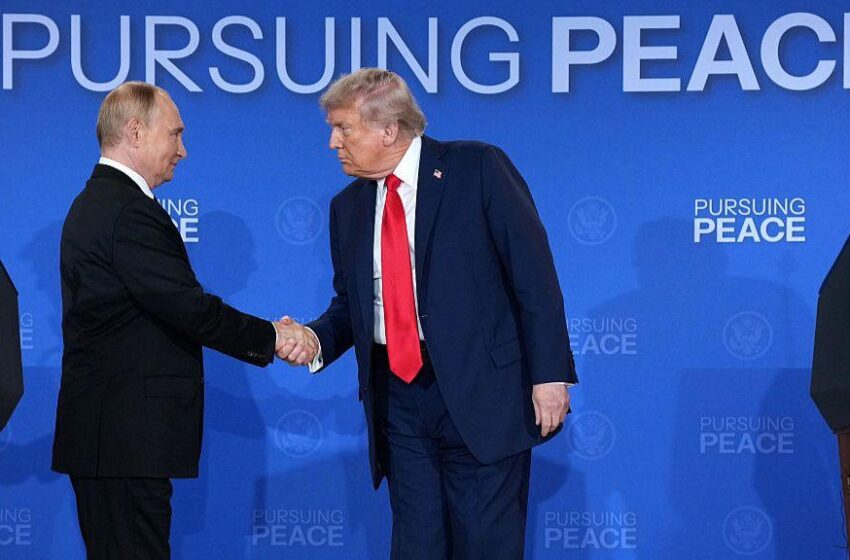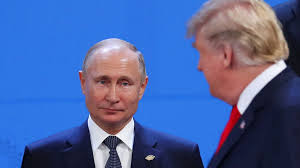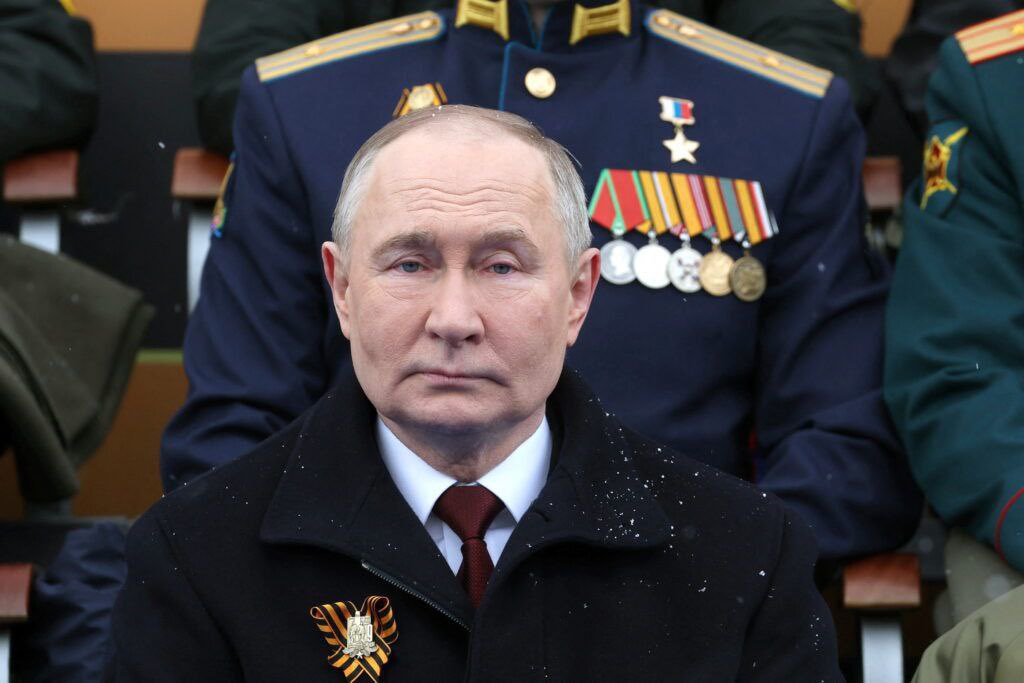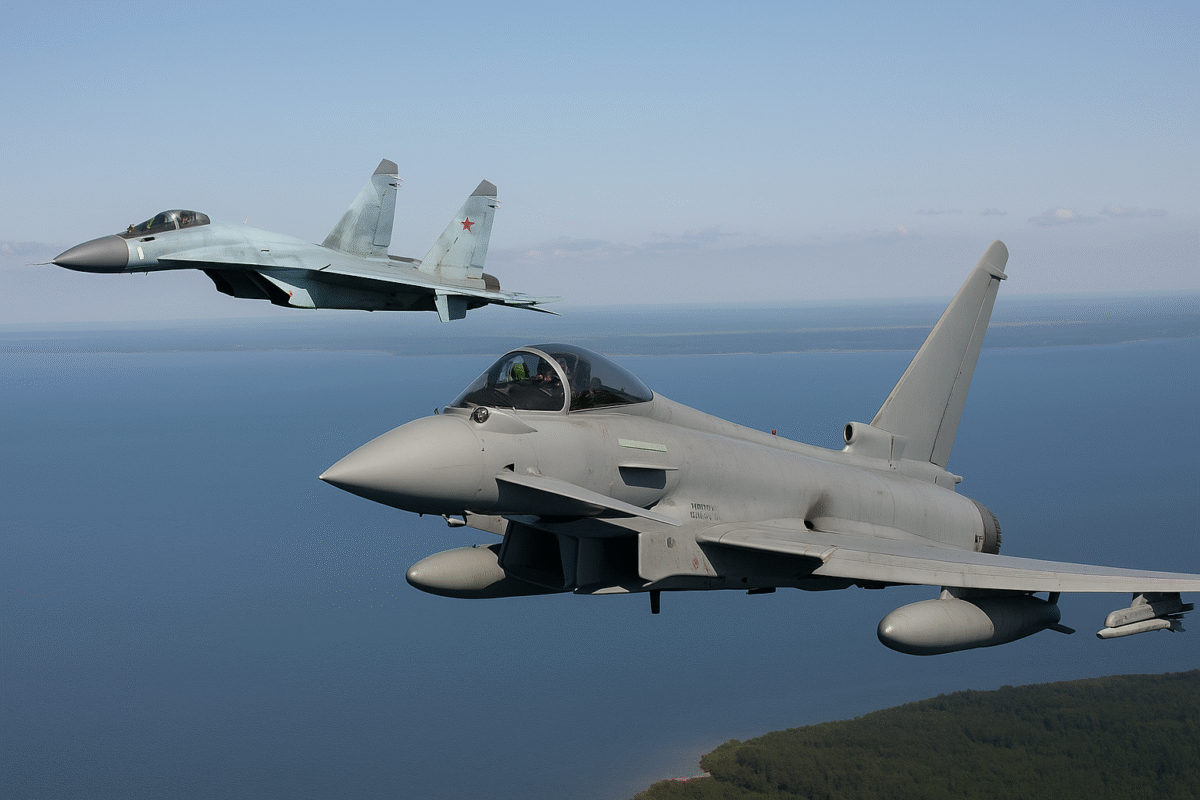What happened in Estonia’s airspace? Inside details of how NATO intercepted Russian jets

President Trump and President Putin during their Alaska summit talks. Photo: Getty Images
Three Russian fighter jets entered Estonian airspace on Friday, prompting swift action from NATO forces and raising tensions along the alliance’s eastern flank.
Estonian authorities described the violation as “brazen” after three MiG-31 aircraft spent roughly 12 minutes inside the country’s airspace over the Gulf of Finland. The jets reportedly had no flight plans, their transponders were turned off, and they did not respond to Estonian air traffic control.
NATO Response and Escalation
According to NATO spokesperson Allison Hart, the alliance “immediately intercepted the aircraft,” underscoring NATO’s readiness to respond to airspace violations. Italian F-35 jets, operating under NATO’s Baltic Air Policing mission, escorted the Russian planes out, while Finnish jets initially monitored their approach from the Gulf of Finland.
Estonian Prime Minister Kristen Michal announced that his government would request consultations under Article 4 of the NATO treaty, which allows members to initiate talks when they perceive a threat to their territorial integrity or security. While Article 4 does not automatically trigger military action like Article 5, it signals serious concern within the alliance.
Official Reactions
Estonia’s Foreign Minister Margus Tsahkna called the incident “unprecedentedly bold” and urged a stronger political and economic response to Russia’s growing provocations. Estonia summoned the Russian chargé d’affaires to lodge a formal protest. EU leaders, including Estonian national Kaja Kallas and European Commission President Ursula von der Leyen, described the breach as a dangerous provocation and emphasized support for strengthening NATO’s eastern defenses.
“President Putin is testing the West’s resolve,” Kallas said on social media. “We must not show weakness.” Von der Leyen added: “Every provocation will be met with determination, while we invest in a stronger Eastern flank.”
Context and Recent Tensions
This incident is part of a broader pattern of Russian airspace violations in 2025. Estonia reported four previous breaches this year alone. Neighboring NATO members Poland and Romania have also recently detected Russian drones entering their airspace, prompting emergency military responses. Poland reported shooting down multiple drones, while Romania scrambled F-16 jets to monitor incursions linked to Russian attacks on Ukrainian infrastructure.
White House officials have not commented on Friday’s incident. NATO forces, including planes from the UK, France, Germany, and Denmark, have been repositioned to bolster defenses along the alliance’s eastern border. Estonian Defence Minister Hanno Pevkur highlighted the importance of the alliance’s collective response, stating: “Here in Estonia, we must ensure our front door remains closed to any unauthorized intrusion.”
Technical Details and Strategic Implications
Sources indicate the MiG-31 jets were flying together, though it remains unclear whether they were armed with air-launched ballistic missiles, known as Kinzhals. The flights coincided with heightened NATO-Russia tensions following Russia’s full-scale invasion of Ukraine in 2022, and a recent surge in drone activity targeting NATO airspace.
Experts emphasize that repeated airspace breaches, even brief ones, carry serious implications for regional security, signaling both testing of NATO’s readiness and an attempt to apply diplomatic pressure.
FAQs:
Q1: What happened in Estonia’s airspace on Friday?
Three Russian MiG-31 fighter jets entered Estonian airspace without permission, remaining for approximately 12 minutes before being intercepted by NATO aircraft.
Q2: How did NATO respond to the airspace breach?
Italian F-35 jets under NATO’s Baltic Air Policing mission escorted the Russian jets out of Estonian airspace, while Finnish jets monitored their approach.
Q3: What is Article 4 of the NATO treaty?
Article 4 allows NATO members to request consultations if they perceive a threat to their territorial integrity, political independence, or security. It does not automatically trigger military action like Article 5.
Q4: Why is Estonia invoking Article 4?
The Estonian government is seeking urgent consultations with NATO allies to address the repeated airspace violations and increase political and security measures against potential threats.
Q5: Have there been similar incidents in the region recently?
Yes, Russia has violated Estonia’s airspace multiple times in 2025. Poland and Romania also reported Russian drones entering their airspace in recent weeks, escalating NATO-Russia tensions.
Q6: Were the Russian jets armed?
It remains unclear whether the MiG-31 jets carried air-launched ballistic missiles known as Kinzhals, though NATO sources noted the aircraft were capable of carrying them.
Q7: What are the broader implications of these incursions?
The violations highlight Russia’s testing of NATO’s readiness and aim to apply diplomatic pressure, emphasizing the need for stronger air defense and collective security measures along the alliance’s eastern flank.




